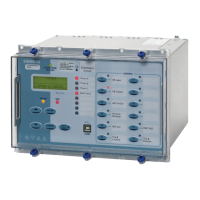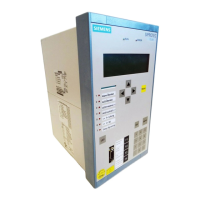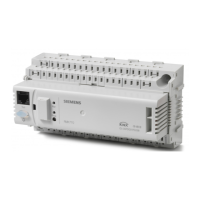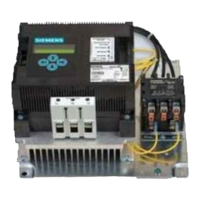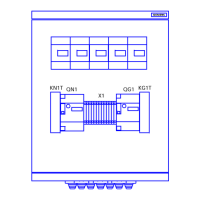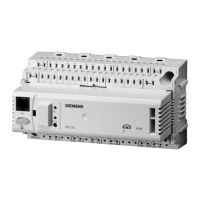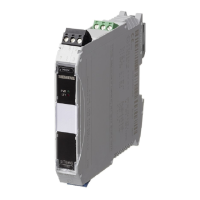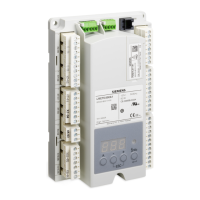7SG15 MicroTAPP Description of Operation
©2013 Siemens Protection Devices Limited Chapter 1 Page 12 of 38
VT
CT
MicroTAPP
Power Flow
Controlled
Network
Figure 8
If a network configuration makes it necessary to change the controlled voltage point, a voltage and current
transformer would be required on the other side of the power transformer together with a complex switching
arrangement for the tap-changer control system. If the network running arrangement is such that the use of
generation make it desirable for the controlled network to be changed from one side to the other, automatic
voltage control may not be possible as shown by Figure 9.
VT
CT
MicroTAPP
Power Flow
Controlled
Network
Figure 9
The advanced functionality of the MicroTAPP uses algorithms that enable the terminal voltage of the non-
measured side of the power transformer to be calculated and effective control to be carried out without a
requirement for any additional inputs. Information relating to the transformer is required as can be seen by
reference to the relay setting section of this document and covers the following situations: -
4.4.2 Location of tap-changer, HV or LV side
Normally the controlled voltage winding is the un-tapped winding and the tapping interval is an equal percentage
change for each tap position, based on a constant nominal output voltage on the fixed winding. If the controlled
voltage point is on the tap-change side the effective voltage change for each tap position will not be constant
across the tapping range.
The MicroTAPP relay uses the location of the tap-changer, with other information, to correctly determine the step
by step voltage level.
4.4.3 Change in voltage per tap
The change in voltage per tap is required and as described above the actual effect is dependent on the location of
the tap-changing mechanism. The value of tapping interval that is input into the relay is a single calculation as
follows: -

